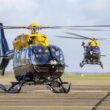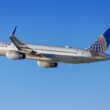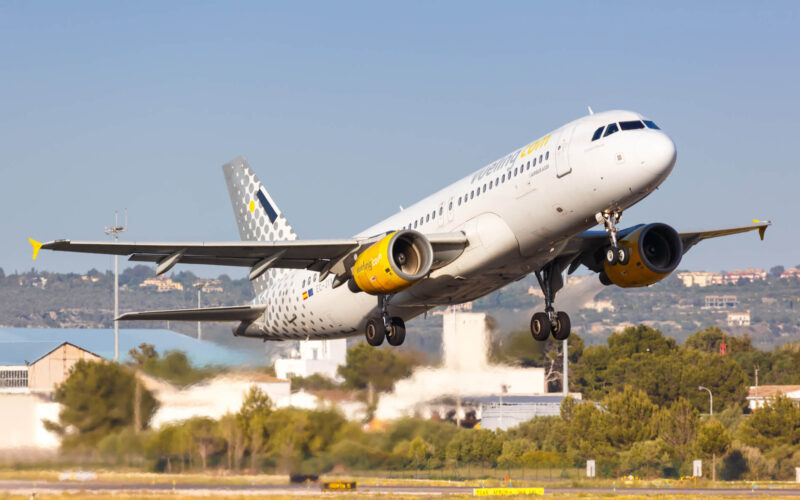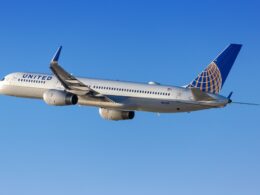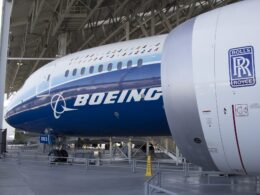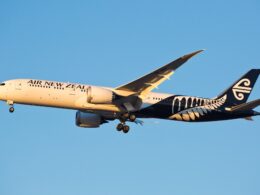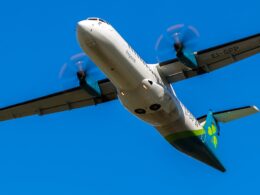France’s Bureau of Enquiry and Analysis for Civil Aviation Safety (BEA) final report looked into how a Vueling Airlines Airbus A320 crew was partially incapacitated during a routine flight from Geneva Airport (GVA), Switzerland, to Barcelona-El Prat Airport (BCN), Spain.
The aircraft (registered as EC-HQJ) began its flight at 08:41 AM local time (UTC +1) on November 17, 2017. As it taxied to GVA runway 05, the Airbus A320 was behind a Cessna Citation Excel, a business jet belonging to NetJets. Air Traffic Control (ATC) instructed both aircraft to hold their positions at the designation hold area near runway 05.
At 08:51, the Cessna departed for its intended destination. A minute later, ATC cleared the Vueling A320 to take off from GVA, which it proceeded to do. At that point in time, the flight crew did not notice any irregularities regarding their oxygen supply or the quality of air in the cabin. However, four minutes after the take-off and following the retraction of the landing gear, both pilots discussed “thick exhaust gases emitted by the Cessna Citation.”
According to the BEA’s report released on November 3, 2020, the captain, who was the pilot flying, felt “almost nauseous,” while the first officer, the pilot monitoring, added that there “was a very strong smell.” The crew, still in contact with Geneva’s ATC, asked what kind of Cessna Citation preceded them, to which ATC replied that there was no traffic in front of them. The captain answered that there had been a Cessna Citation prior to departure and said he would file a report due to odors in the cockpit. As the ATC informed on the type of aircraft that was ahead of them prior to the take-off, both pilots indicated that they did not feel well. Subsequently, the captain proposed to increase the air intake to clear up the air in the cabin.
Possible incapacitation
Seven minutes after taking off, the Vueling Airbus A320 was transferred to the Marseilles en-route control center and proceeded to climb to Flight Level (FL) 290. Shortly thereafter, the crew called in the purser of the flight and asked whether he experienced any weird smells inside the main cabin, to which the purser replied negatively. The captain of the A320 proceeded to ask the purser to leave the cabin door open and for the cabin crew to watch both pilots in case something went south.
The four-striped pilot informed his colleague that he once again felt nauseous, to which the first officer responded by deploying the oxygen masks in the cabin. The captain put on his mask, while the FO proceeded to go to the toilet. After he came back, the captain asked his crewmate how he felt. While the pilot responded that he previously had felt nauseous, he was “feeling a little better” at that point, noted the French investigators.
After a brief discussion in the cockpit over their choice of an alternative airport, the crew decided that if an emergency occurred, they would attempt an emergency landing at Marseille Provence Airport (MRS). While the BEA did not highlight a worsening condition of either of the pilots, the first officer put on his oxygen mask and a minute after he did so, the crew declared PAN PAN and asked ATC to divert to Marseilles, France.
At 9:30 AM local time (UTC +1), the crew did not identify any abnormalities regarding their health. Six minutes after, the crew proceeded to land at the French airport without any incident. Emergency services met the Airbus A320 at the apron and both pilots were taken to the hospital in order to conduct blood tests to check whether the pilots experienced carbon monoxide poisoning. Following the testing and a brief monitoring period, the hospital workers released the captain and the first officer from the hospital.
The blood tests did not indicate anything out of the norm, while no other toxicological analysis was conducted, noted the BEA. However, nausea and dizziness continued for a few days, including periods of respite, added the French agency.
Confusion leading to hypotheses
The BEA, aiming to pinpoint the reason behind the partial incapacitation, raised a few hypotheses. A hypothesis of food poisoning was rejected almost immediately, as the crew had not experienced digestive problems and the symptoms appeared following reports of weird odors inside the cockpit. Contamination of air following de-icing was also ruled out, as there was no de-icing event conducted at the time of departure. The investigators were still left with a puzzle.
Maintenance staff located at the airport carried out a task, designated by the aircraft manufacturer, to search for a potential source of the cabin odor. Called the TSM Task 05-50-00-810-831-A – Identification of the Cause of Cabin Odors or Smoke in the Airbus A320 manual, the task usually looks at the Auxiliary Power Unit (APU), both engines, bird strikes, issues with the aircraft’s air conditioning packs (PACK 1 & PACK 2) as a potential cause of odor or smoke in the cabin. The TSM Task did not indicate anything abnormal, nor did subsequent engine tests conducted by engineers on the ground. Few days following the incident, the Airbus A320 was given a C-Check. The scheduled 20-month service checkup, with particular attention given to the leak tightness of the seals which confine the lubricants of the rotating parts of the engines and the APU, revealed that everything was in order.
Attention shifted to the Cessna Citation.The BEA indicated that the business jet entered into maintenance on August 16, 2020, and was released back into service on September 29, 2017, not long before the incident took place. The right-hand engine of the aircraft was removed and Pratt & Whitney, the manufacturer of the PW545C engine on the jet, conducted scheduled maintenance on the turbofan.
Following interviews with the NetJets’ flight crew, a request to find a potential oil leak, and no items in the Aircraft Technical Log, the investigators once again hit a dead end. Even a special event, namely that the metal chip detector on the left-hand engine was activated on November 19, 2017, showcased nothing. The event was recorded in the Cessna Citation Excel’s technical log and an oil sample was tested. Again, the investigators found that everything was good under the engine’s hood.
The French accident investigators then proceeded to look into the possibility of air contamination from the outside.
Exhaust gasses
The Cockpit Voice Recorder (CVR) data revealed that there was a connection between the two pilots experiencing an odd odor in the cockpit and the Cessna Citation being in front of them. The Airbus A320 stood behind the private jet for nearly four minutes.
Both aircraft engines are located at an approximate height of two meters above the ground. Thus, with the Vueling aircraft holding for nearly four minutes in front of the Cessna, the conditions made it possible that a concentration of exhaust gasses formed up in front of the Airbus narrow-body. Subsequently, the exhaust gasses could have been taken in by the CFM56-5B engines. Combined with the fact that the air in the cockpit and cabin are different, and 60% of the air in the cockpit comes from the Pressurization Air Conditioning Kit (PACK) 1 located in the left-hand engine when the cross-bleed valve is closed, and the faster air circulation in the cockpit, there was a possibility that exhaust gasses had a greater concentration in the flight deck, rather than the main cabin. Thus, this could have been the reason why the purser could not identify any kind of odor in the part of the metal tube where passengers are usually sat.
In addition, the Cessna Citation’s metal chip detector alerted its flight crew about a potential issue on the left-hand engine, the same engine where PACK 1 is located on the Airbus A320.
The negative results at the hospital could be explained by the elapsed time between the potential poisoning and the testing, in addition to the usage of oxygen masks by the pilots. Nevertheless, the crew described the smell as acrid and acidic, which is usually associated with Nitrogen oxide (NOx) and Sulfur dioxide (SO2). Both gasses are emitted as a result of the combustion process onboard an aircraft, read the BEA’s report. The investigators also looked into a possible contamination by tricresyl phosphate (TCP), which sometimes could also turn into tri ortho-cresyl phosphate (ToCPs). The chemicals are found in engine oil, which can sometimes leak into the compression system. Once again, no contamination was found after samples from various aircraft filters were sent to an independent laboratory.
Even after sampling the crew’s hair for possible contamination, once again the results left the investigators empty-handed.
“Despite the wide range of actions undertaken, the investigation was not able to factually identify what caused the flight crew’s symptoms and physical discomfort,” concluded the BEA. The most likely hypothesis was that the crew inhaled an excessive amount of gasses from the Cessna Citation’s exhaust system, read the investigation report.
“However, it cannot be excluded that the crew were intoxicated by another substance which either quickly disappeared or which was not specifically searched for in the samples [taken from the aircraft],” added BEA.
Basis to investigate
The lesson to be learned here, concludes the report, is the fact that investigators cannot act alone in cases where the quality of cabin air is questioned. The usage of prior accepted agreements between airlines, airports and emergency services would allow emergency services to immediately conduct medical examinations, leading to a more definitive conclusion later on.
A fatal example of an incapacitated crew could be Helios Airways Flight 552, whereupon the crew of a Boeing 737 flying from Larnaca, Cyprus, to Prague, Czechia, via Athens, Greece, became incapacitated. The crucial difference between the two incidents was the fact that the Helios Airways crash was related to the loss of cabin pressure onboard.
The loss of cabin pressure stemmed from the fact that the airline’s pilots failed to recognize that the pressurization system was set to manual mode. They failed to identify the true nature of the problem and crashed just outside of Athens, Greece. While the conditions were different, the end result could have been potentially fatal for people onboard Vueling flight VY6204.



